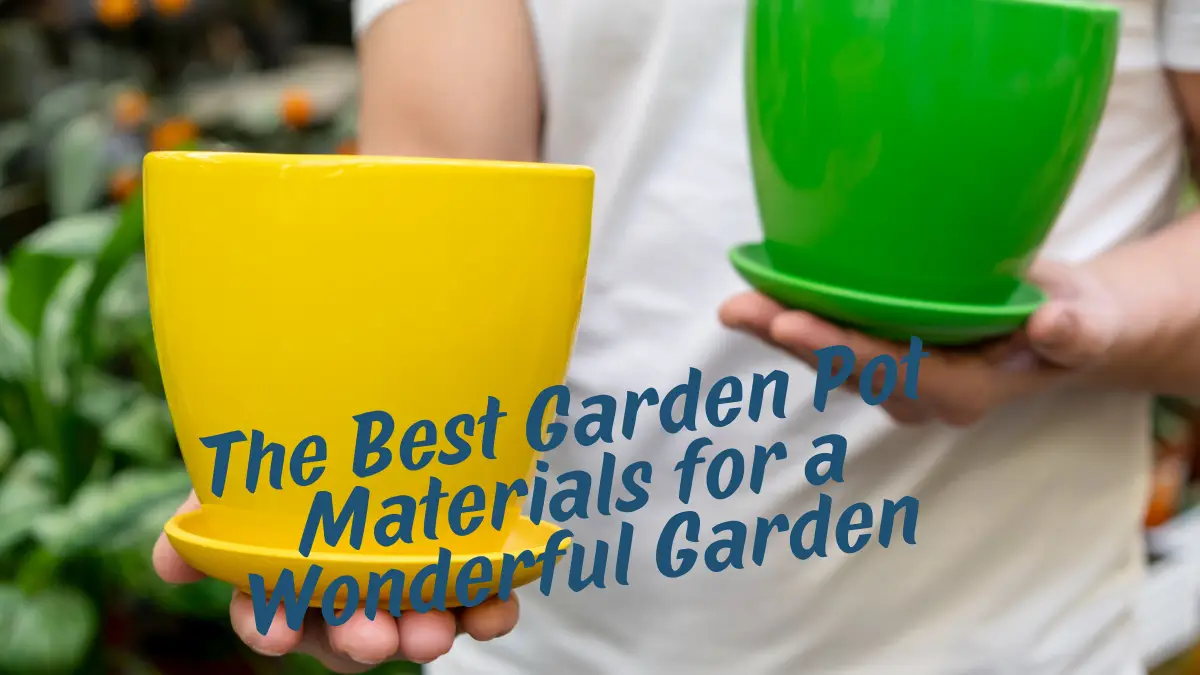Getting into container gardening? Smart move. Whether you’re working with a tiny balcony or planning an epic outdoor setup, choosing the right garden pot materials can make or break your green game. I’ve been through the trial-and-error phase (RIP to my collection of cracked pots), so let me save you some cash and frustration.
The material you pick isn’t just about looks – though that matters too. It’s about drainage, weight, durability, and how your plants actually perform. Let’s break down what works, what doesn’t, and what’s worth your money.
Terracotta:
The Classic Choice That Actually Works. Terracotta pots are like that reliable friend who never lets you down. They’ve been around forever because they get the job done right.
These clay beauties breathe – literally. The porous material lets excess moisture evaporate, which means you’re less likely to drown your plants (guilty as charged on that one). The natural insulation keeps roots cooler in summer heat, and that earthy look works with pretty much any style.
I’ve got glazed terracotta pots that are going on their fifth year and still look fresh. The glazed versions resist weathering better and are easier to clean – definitely worth the extra few bucks.
The reality check: They’re heavy when filled with soil. Moving a large terracotta pot feels like deadlifting, and they can crack in extreme temperature swings. But for most situations? They’re solid gold.
Metal Pots:
Modern Style with Serious Performance. Metal containers bring that sleek, contemporary vibe that works whether you’re going for industrial chic or modern minimalist. I’ve been using copper and galvanized steel pots for the past two years, and they’re game-changers.
The durability factor is unreal – these things can handle weight, weather, and the occasional knock without breaking a sweat. Copper develops this awesome patina over time that actually looks better with age. Galvanized steel stays sharp-looking and handles outdoor conditions like a champ.
Pro tip from experience: Metal can heat up in direct sun, so pair them with plants that don’t mind warmer root zones, or position them strategically for some afternoon shade.
The main downside? No natural moisture regulation like terracotta, so you’ll need to be more precise with watering. But once you dial it in, metal pots deliver results.
Wooden Containers:
Rustic Charm That Actually Works. Don’t sleep on wood. I started with a few cedar planters thinking they’d be temporary, but they’ve become permanent fixtures. There’s something about natural wood that just works – it fits any setting and ages gracefully.
Cedar and redwood are your best bets for longevity. They naturally resist moisture damage and insects, plus they’re lightweight compared to terracotta or metal. I’ve built custom wooden boxes for larger plants, and the flexibility to create exactly what you need is pretty sweet.
The insulation properties are excellent – roots stay protected from temperature extremes, and the natural look complements any plant choice.
Keep it real: Cheaper woods will deteriorate faster, especially outdoors. Invest in quality wood or be prepared to replace them every few seasons. Also, avoid treated lumber near edible plants.
Plastic:
Don’t Write It Off Just Yet. Yeah, plastic gets a bad rap, but hear me out. Modern plastic containers aren’t your flimsy dollar store variety. High-quality resin and polymer pots can look surprisingly good and perform better than you’d expect.
The lightweight factor is huge – I use plastic for plants I move seasonally or in spots where weight matters. They’re budget-friendly, come in tons of styles, and won’t break if knocked over (learned this lesson the hard way with kids around).
UV-resistant varieties hold up well outdoors, and you can find options that mimic stone, ceramic, or even wood textures convincingly.
The catch: Cheap plastic will crack, fade, and look terrible within a season. Heat retention can be an issue in direct sun, and they don’t have the natural drainage properties of clay. But for specific situations? They’re useful tools in your container gardening arsenal.
Material Comparison: What Works Where
| Material | Best For | Durability | Weight |
|---|---|---|---|
| Terracotta | Most plants, beginners | High | Heavy |
| Metal | Modern spaces, durability | Very High | Medium |
| Wood | Custom sizes, natural look | Medium | Light |
| Plastic | Budget builds, mobility | Low-Medium | Very Light |
Making the Right Choice for Your Space
Your living situation drives the decision more than anything. Apartment balcony? Weight matters – go with quality plastic or smaller terracotta. Ground-level patio? Metal or large terracotta containers work great. Building a permanent garden setup? Wood planters give you flexibility and style.
Consider your plant choices too. Moisture-loving plants do well in plastic or glazed containers. Plants that prefer drier conditions thrive in terracotta. Large plants need the stability of heavier materials.
Bottom Line
The best garden pot material is the one that fits your space, budget, and gardening style. I keep a mix – terracotta for most of my plants, metal for statement pieces, wood for custom builds, and plastic for seasonal moves.
Start with a few quality terracotta pots if you’re just beginning. They’re forgiving, look good, and teach you proper watering habits. As you get more experience, branch out based on what your space and plants need.
Your garden should work for your lifestyle, not against it. Choose materials that make you want to get out there and grow something awesome.




